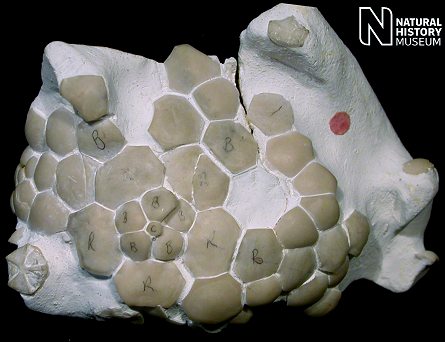
|
UINTACRINIDS |
Uintacrnids are stemless crinoids with a large bowl-like calyx / cup and extremely long arms. Spectacular and extensive assemblages of perfectly preserved individuals are well known from the Chalk of the US and hence the anatomy is known in great detail (Kansas Uintacrinus; Colorado Uintacrinus). Conversley, articulated remains of Uintacrinus are amongst the rarest of all fossils from the British chalk. This is in interesting contrast to Marsupites, another large stemless form, presumed to overlap heavily with Uintacrinus in terms of habit and mode of life, but whose ariculated cups are common in museum collections. This may reflect relative robustness of the calyx, relative abundance, or perhaps that the calyx of Marsupites was inserted into the sediment during life whilst that of Uintacrinus was not.
Two species of Uintacrinus are present in the British Chalk, Uintacrinus socialis and Uintacrinus anglicus, whose ossicles act as zone fossils in the Santonian. The U. socialis zone occurs immediately before that of Marsupites testudinarius, whilst U. anglicus occurs in a narrow band above. This has cautionary implications for the use of zone fossils, as clearly Uintacrinus was present somewhere during the time of Marsupites dominance in order to reappear afterwards. Ossicles from the calyx of U. socialis are small and essentially convex on the outer surface, whilst those of U. anglicus are large and possess broad furrows on the outer surface. Both have distinctive wedge-shaped recesses on the inner surface by which the group is distinguished. Articulated remains are known from Kent and Yorkshire.

1). Uintacrnus socialis, a very large and well preserved calyx viewed from the underside (x1.6, found between Margate and Westgate, Kent, Rowe Collection, BMNH (British Museum (Natural History) London) E46768. Image © 2005 The Natural History Museum, by kind permission).
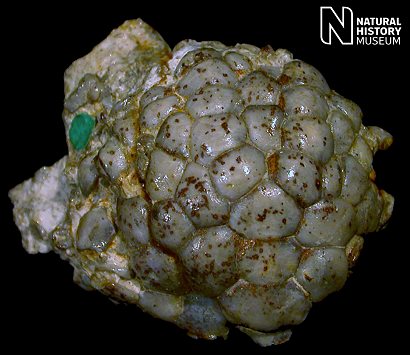
2). Uintacrinus socialis, a well articulated section of calyx, the rows of ossicles appear to branch, reflecting the fact that the arms are partly incorporated into the cup (x1.5, near Danes Dyke, East Riding, Yorkshire, BMNH (British Museum (Natural History) London) E26324. Image © 2005 The Natural History Museum, by kind permission).
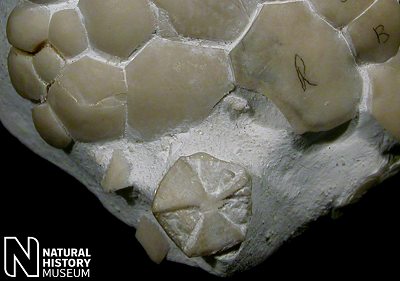
3). Uintacrnus socialis, detail of the specimen in Fig. 1, the ossicle bottom-centre displays the inner surface and the characteristic radiating recesses (x5.0, found between Margate and Westgate, Kent, Rowe Collection, BMNH (British Museum (Natural History) London) E46768. Image © 2005 The Natural History Museum, by kind permission).
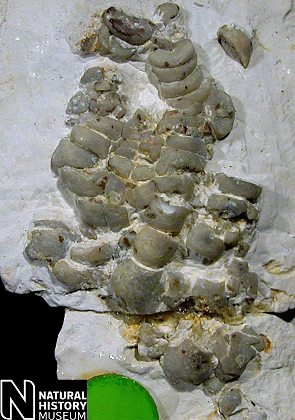 A A |
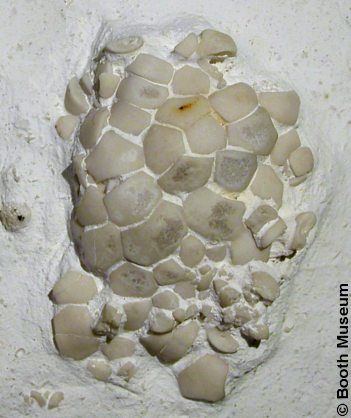 B
B |
4). Uintacrinus socialis; (A) A partial cup retaining the proximal sections of the arms (x3.5, near Danes Dyke, East Riding, Yorkshire, Wright & Wright Coillection, BMNH (British Museum (Natural History) London) EE5963; (B) Partial calyx, x4.0, Booth Museum, BMB 009678, by kind permission of John Cooper. Image A © 2005 The Natural History Museum, by kind permission).
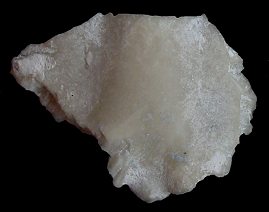 A A |
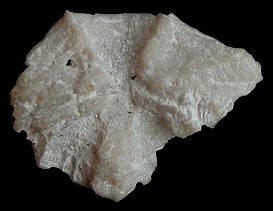 B B |
4). Uintacrinus anglicus; typical ossicle; (A) outer surface, broad furrows / undulations are apparent; (B) inner surface (x7.5, Friars Bay, Peacehaven, Newhaven Chalk Formation (Uintacrinus anglicus zone, Old Nore Beds), Randell Collection, RR1457).